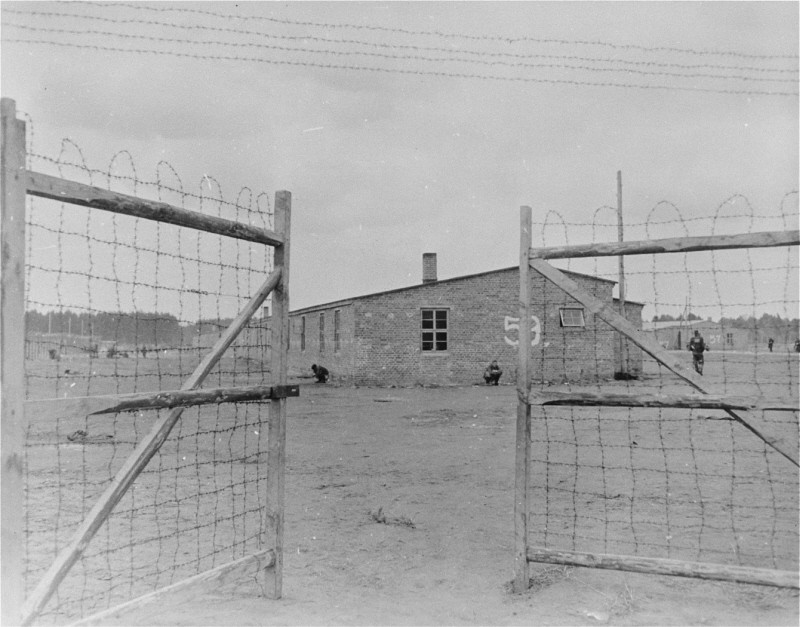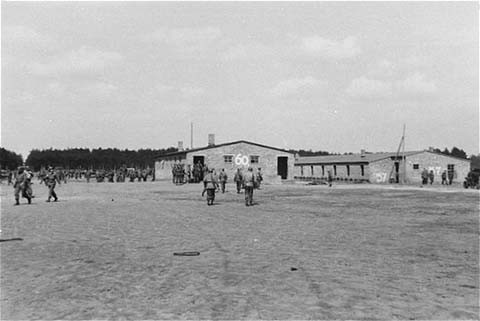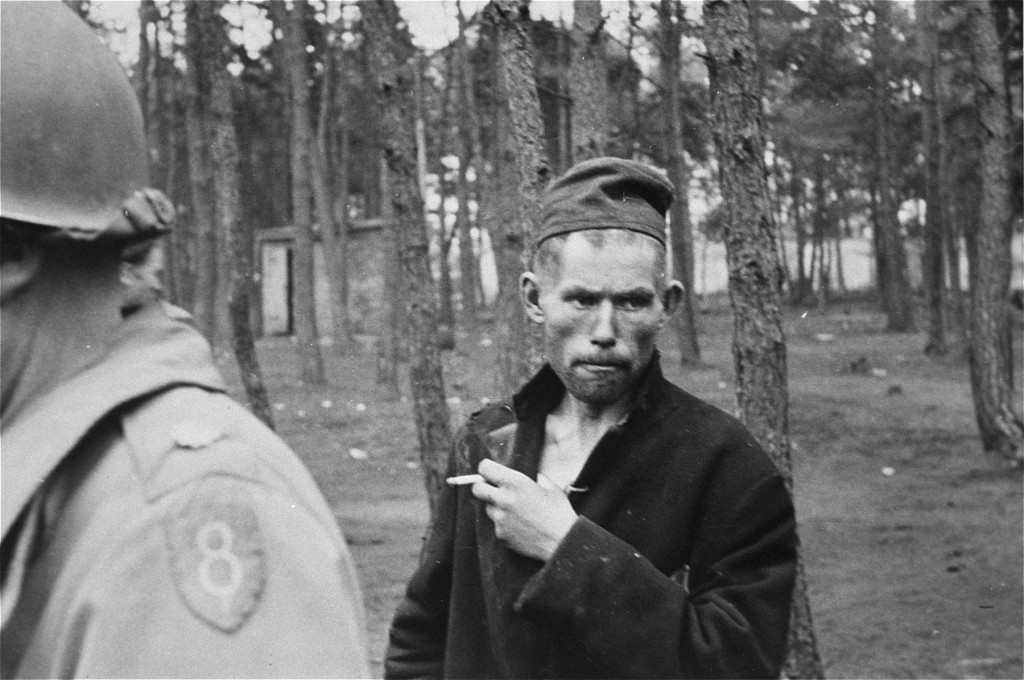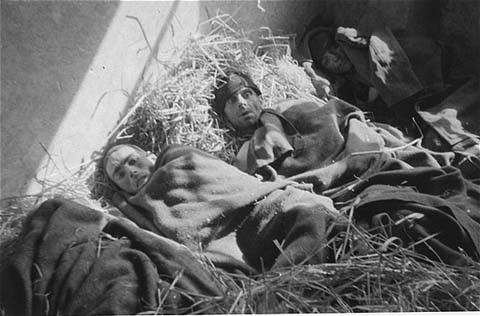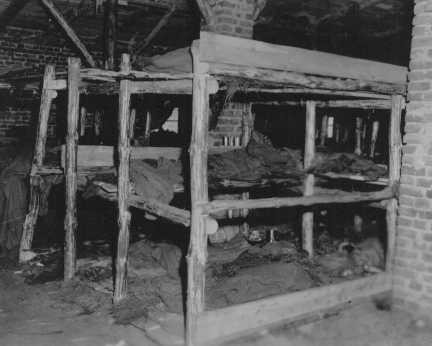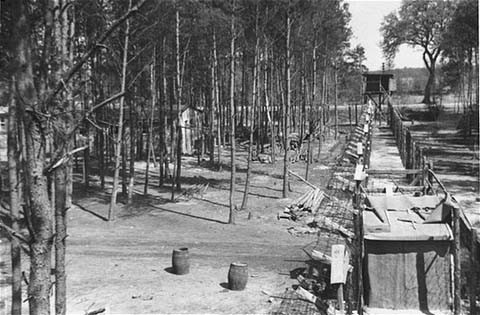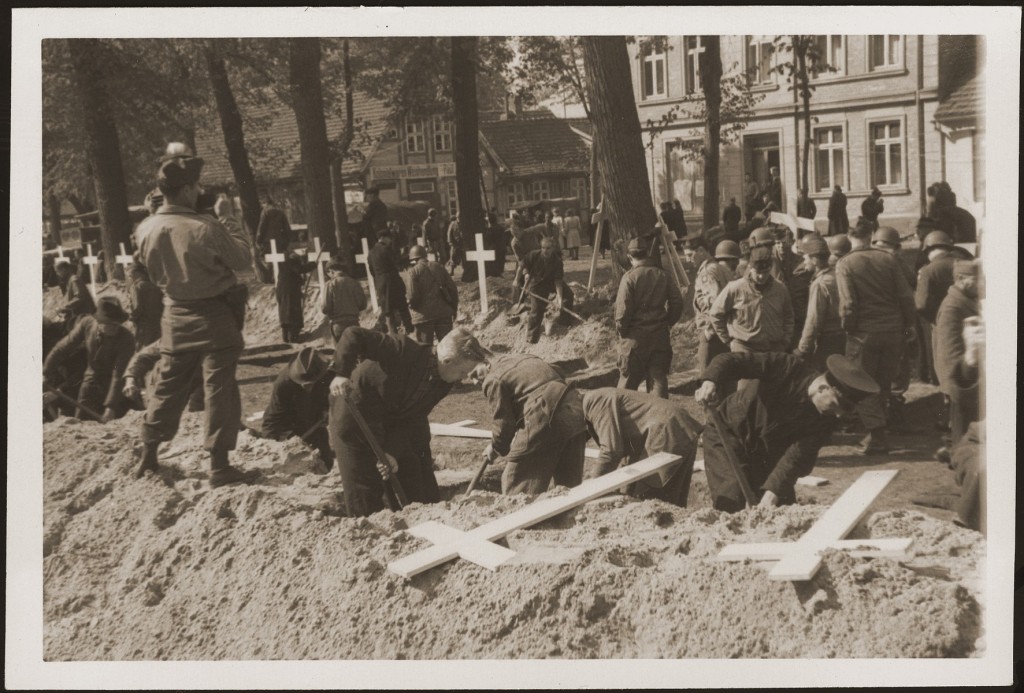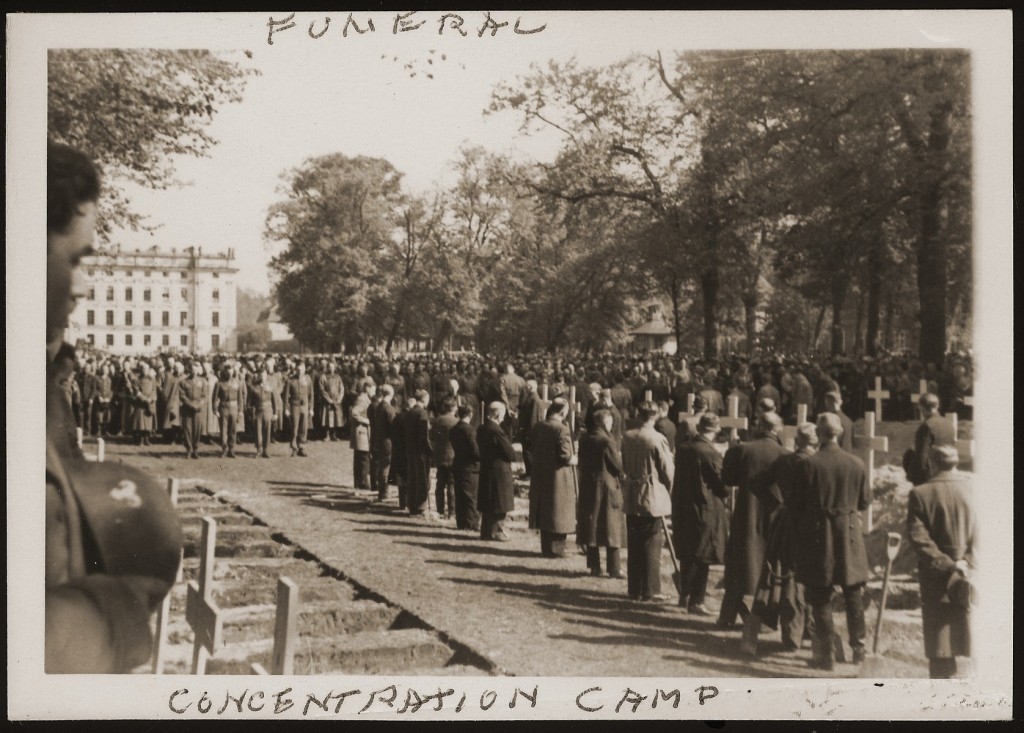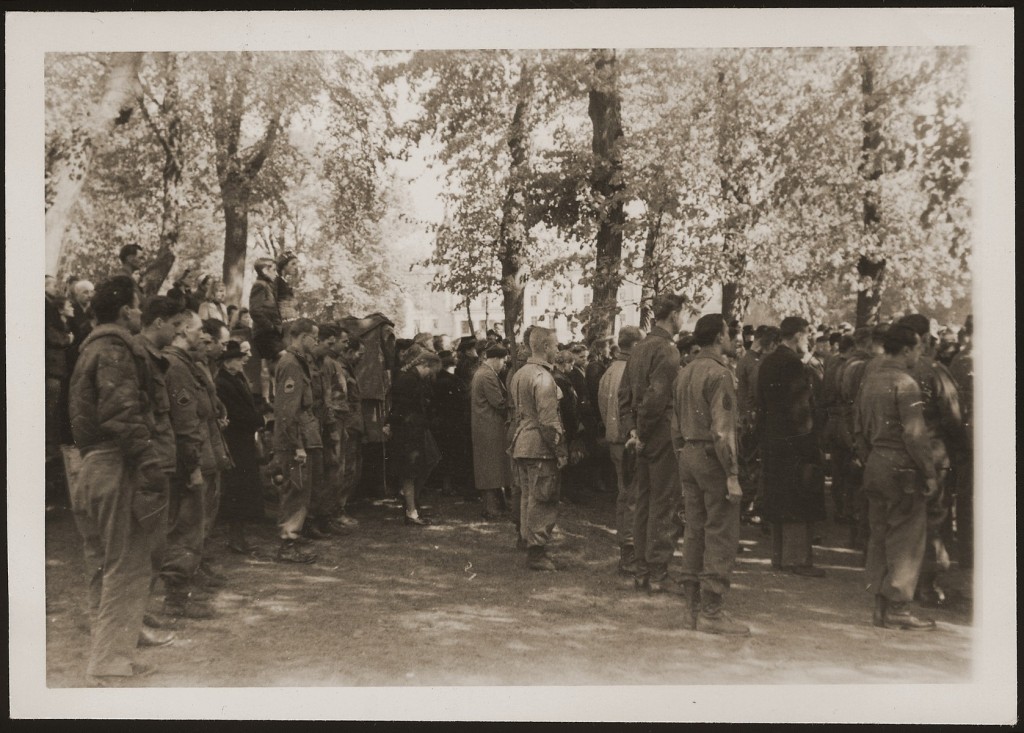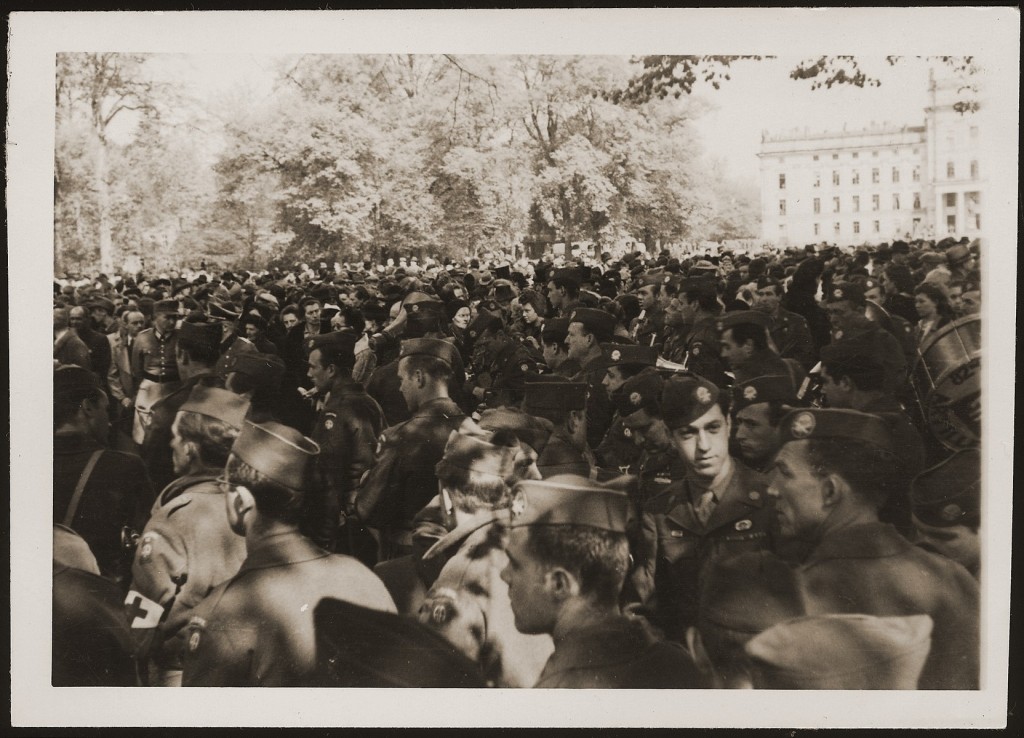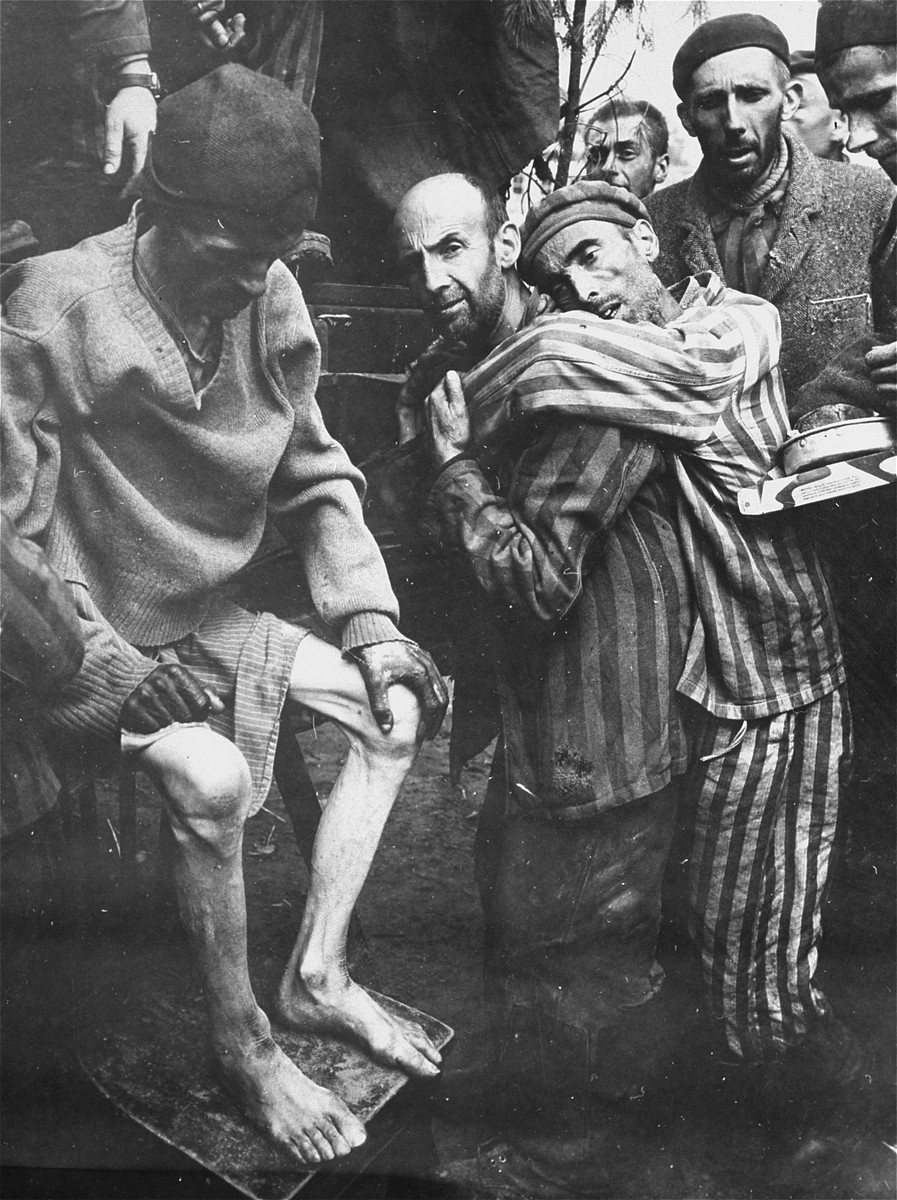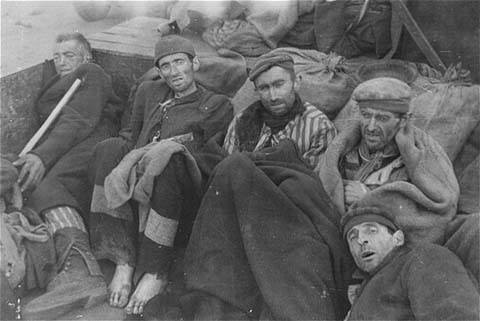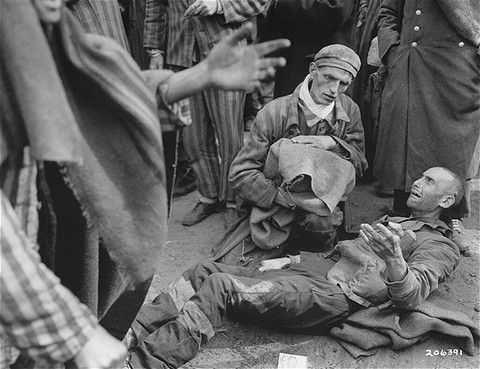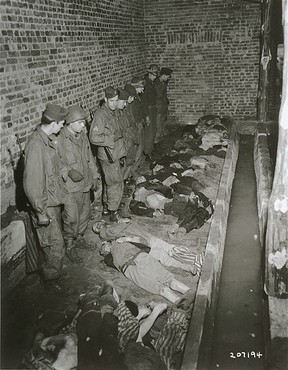
Wöbbelin
Between 1933 and 1945, Nazi Germany and its allies established more than 44,000 camps and other incarceration sites (including ghettos). The perpetrators used these locations for a range of purposes, including forced labor, detention of people deemed to be "enemies of the state," and mass murder. Millions of people suffered and died or were killed. Among these sites was the Wöbbelin camp.
The Wöbbelin camp, near the city of Ludwigslust, was a subcamp of the Neuengamme concentration camp. The SS had established Wöbbelin in early February 1945 to house concentration camp prisoners whom the SS had evacuated from other camps to prevent their liberation by the Allies. At its height, Wöbbelin held some 5,000 inmates, many of whom were suffering from starvation and disease.
On May 2, 1945, the 8th Infantry Division and the 82nd Airborne Division encountered Wöbbelin. Living conditions in the camp when the US 8th Infantry and the 82nd Airborne arrived were deplorable. There was little food or water, and some prisoners had resorted to cannibalism. When the units arrived there, they found about 1,000 inmates dead in the camp. In the aftermath, the US Army ordered the townspeople in Ludwigslust to visit the camp and bury the dead.
On May 7, 1945, the 82nd Airborne Division conducted funeral services for 200 inmates in the town of Ludwigslust. Attending the ceremony were citizens of Ludwigslust, captured German officers, and several hundred members of the airborne division. The US Army chaplain at the service delivered a eulogy stating that:
The crimes here committed in the name of the German people and by their acquiescence were minor compared to those to be found in concentration camps elsewhere in Germany. Here there were no gas chambers, no crematoria; these men of Holland, Russia, Poland, Czechoslovakia, and France were simply allowed to starve to death. Within four miles of your comfortable homes 4,000 men were forced to live like animals, deprived even of the food you would give to your dogs. In three weeks 1,000 of these men were starved to death; 800 of them were buried in pits in the nearby woods. These 200 who lie before us in these graves were found piled four and five feet high in one building and lying with the sick and dying in other buildings.
In accordance with a policy mandated by General Dwight D. Eisenhower, the Supreme Commander of the Allied Forces, the US Army in Ludwigslust ordered "all atrocity victims to be buried in a public place," with crosses placed at the graves of Christians and Stars of David on the Jewish graves, along with a stone monument to memorialize the dead.
Critical Thinking Questions
- What challenges did the Allied forces face when they encountered the camps?
- What challenges immediately faced survivors of the Holocaust?
- To what degree was the local population aware of this camp, its purpose, and the conditions within? How would you begin to research this question?
- Did the outside world have any knowledge about these camps? If so, what, if any, actions were taken by other governments and their officials?
- What choices do countries have to prevent, mediate, or end the mistreatment of imprisoned civilians in other nations?


